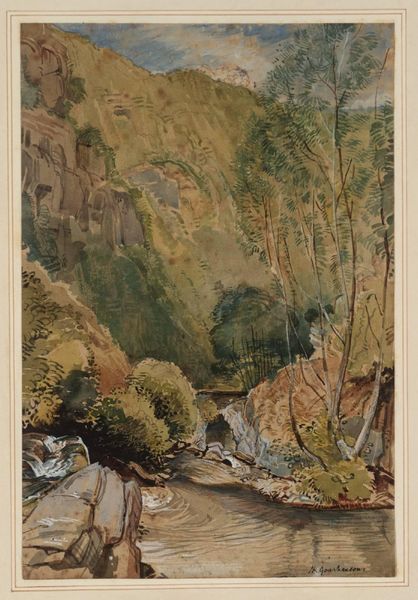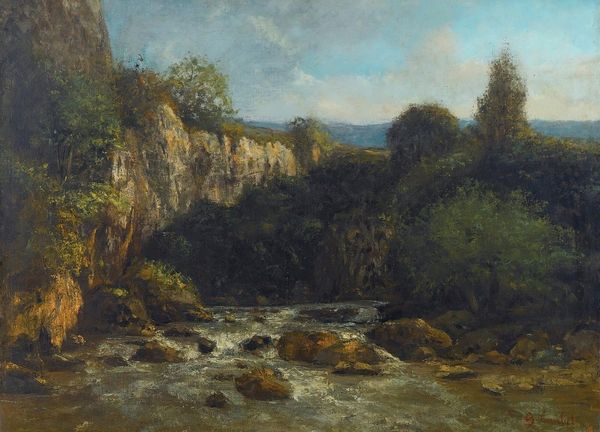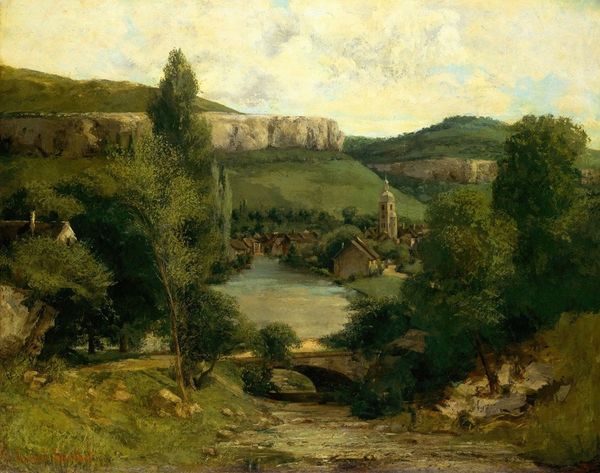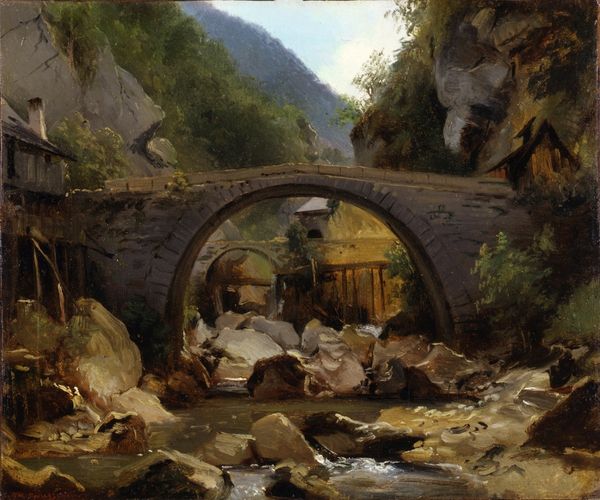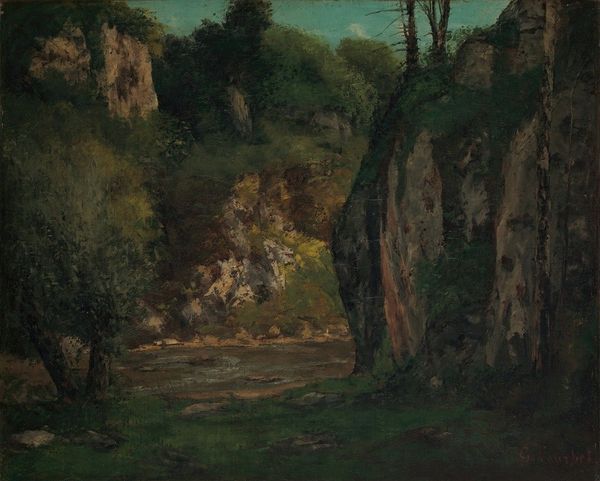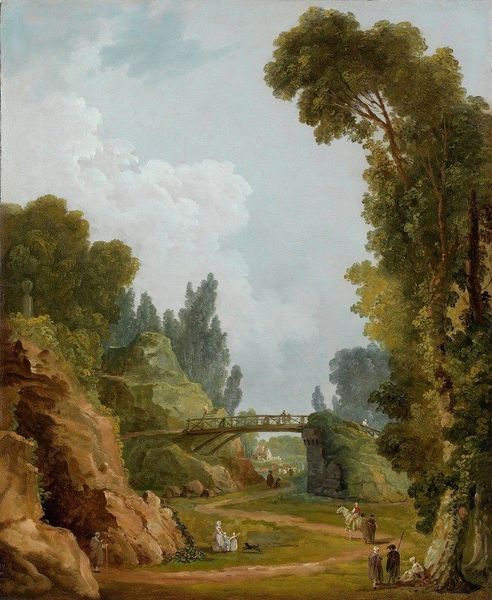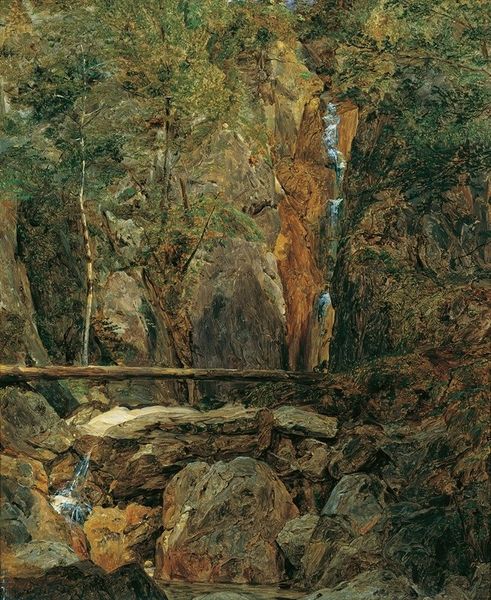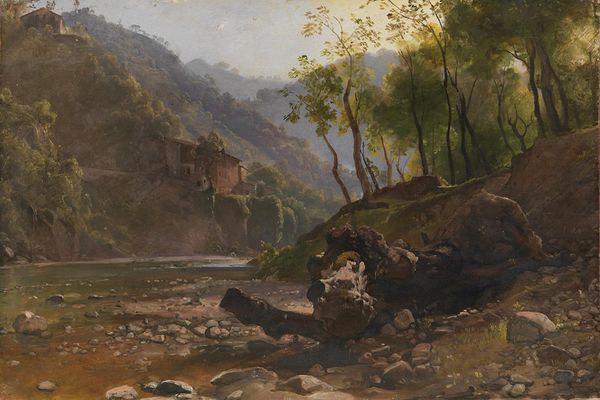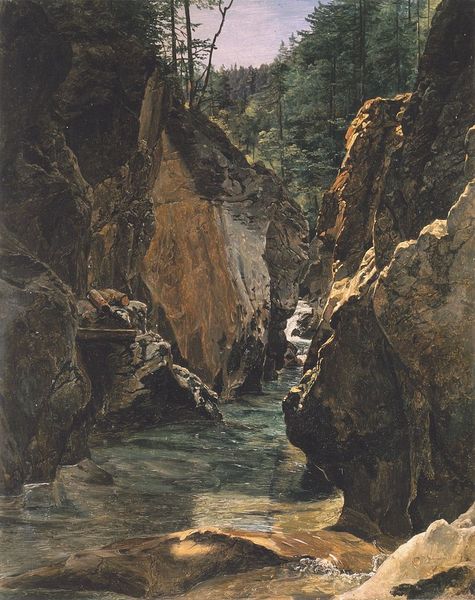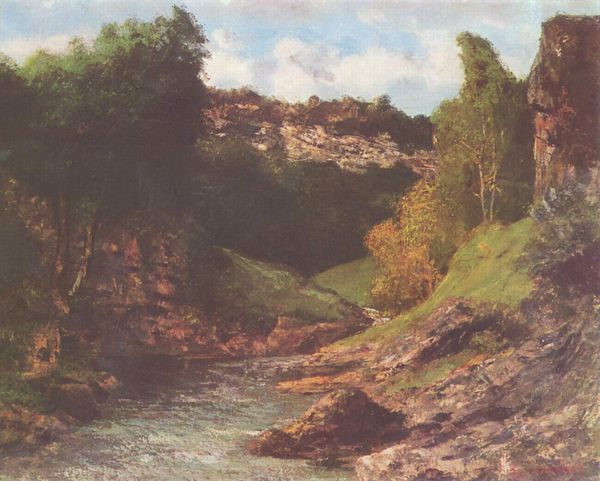
Dimensions: 40.3 x 32.1 cm
Copyright: Public domain
Theodore Rousseau painted this landscape, Water Mill, Thiers, using traditional oil paints on canvas. The painting's materiality is crucial to understanding its cultural significance. Rousseau's application of paint – thick, layered, and textured – mirrors the ruggedness of the French countryside. Notice how the brushstrokes evoke the dense foliage and the rough-hewn stone of the mill. The materiality of the paint itself becomes a language, expressing the weight and solidity of the scene. The choice of subject matter isn't accidental. Water mills were vital to pre-industrial economies, harnessing natural power for labor. Rousseau's focus on the mill places the painting within a specific social context, reflecting a world where human activity was intimately connected to the environment. This connection is emphasized through the labor-intensive process of oil painting itself. Ultimately, Water Mill, Thiers, invites us to consider the relationship between labor, landscape, and artistic production, reminding us that even the most idyllic scenes are rooted in material realities.
Comments
No comments
Be the first to comment and join the conversation on the ultimate creative platform.

